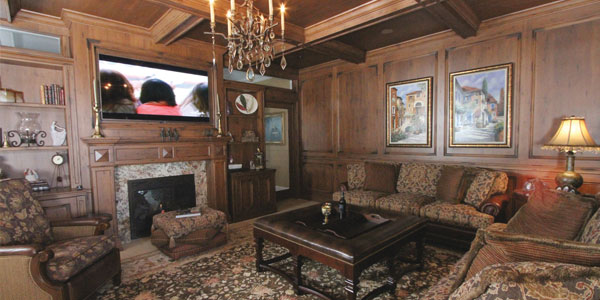 |
 Natalie Weinstein is President of Natalie Weinstein Design Associates, The Natalie Weinstein Home Decorating Club and Uniquely Natalie, a quality consignment boutique. Enjoy Natalie’s Long Island Focus featured in House Magazine or call: 631-862-6198. |
| At the turn of the century, the most elegant of homes were never without fireplaces, crown molding, wainscoting and other architectural accoutrements. Even the exterior, such as in the old New York City brownstones, had pediments, columns and fancy brick, stone and cement pointing to enhance the basic structure. By the 1950’s and the advent of suburbia, homes became stripped down to be affordable to the masses. Levitt construction was the classic example of homes meant to be expanded and enhanced at some future time. Many of them were, but over the years the “addition of space” superseded the “addition of grace.” The gracefulness and elegance of classically appointed rooms, which lost ground in favor of space, now is most definitely popular again. So where did it all come from? A little history lesson if you will: It all began with the Egyptians who may be remembered for their impressive tombs, but also actually perpetuated the column which was a throw back to ancient culture and even Stonehenge. These columns were copied and embellished upon by the Greeks who also added the moldings that were eventually organized and categorized by their conquerors, the Romans. Got it so far? Good. So now the “classical” style of molding, columns and architecture traveled through the centuries, appearing and re-appearing in different countries at different times – always referred to in some way as classical or neo-classical (new classical). Today we are experiencing yet another classical revival and our interest is heightened by the desire to improve the value of our homes as well as enhance its interior space for personal empowerment and pleasure. Long Islanders have gone “crown molding happy,” more often than not, painting it white and using a substantive color on the walls, a departure from the brown stained molding and white walls of the 1970’s that might still exist in some homes. Columns have taken the place of bearing walls in an effort to create more open space. Non-supporting columns have added architectural interest whether fluted or straight, round or square, contemporary or traditional. Half-columns applied to walls (pilasters) adorn doorways and fireplace mantles and they create a feeling of timelessness. Fireplaces, themselves available in wood-burning, gas or electric, while not in every room as in days of yore, are appearing more and more in living rooms, dining rooms, as well as dens, bathrooms and bedrooms. Wainscoting (literally meaning wood applied to the wall) is most popular as chair rail with panels below. It is often painted white to match the rest of the trim, or stained a wood tone if applied to the entire wall and separated by chair rail using raised panels or applied moldings. All in all, our homes have become more gracious and more interesting (as long as we don’t get too pretentious) by our architectural additions. So dress up your space with the classics and see how your furniture, no matter what your style, will be enhanced. |
|












 20 lucky winners will win $500 each in prizes totaling $10,000.
20 lucky winners will win $500 each in prizes totaling $10,000. 